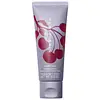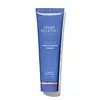What's inside
What's inside
 Key Ingredients
Key Ingredients

 Benefits
Benefits

 Concerns
Concerns

 Ingredients Side-by-side
Ingredients Side-by-side

Water
Skin ConditioningSucrose
HumectantGlycerin
HumectantHydrated Silica
AbrasiveDisodium Laureth Sulfosuccinate
CleansingDehydroxanthan Gum
Emulsion StabilisingSodium Lauroamphoacetate
CleansingPolyacrylate Crosspolymer-6
Emulsion StabilisingMaltodextrin
AbsorbentPolyglyceryl-10 Oleate
Skin ConditioningPropanediol
SolventMalpighia Punicifolia Fruit Extract
AntioxidantVaccinium Macrocarpon Fruit Extract
AstringentLactobacillus/Punica Granatum Fruit Ferment Extract
Skin ConditioningBromelain
Skin ConditioningPapain
Skin ConditioningCaffeine
Skin ConditioningCitric Acid
BufferingTocopherol
AntioxidantOryza Sativa Bran Extract
Skin ConditioningHelianthus Annuus Extract
EmollientRosmarinus Officinalis Leaf Extract
AntimicrobialRaphanus Sativus Root Extract
AstringentLeuconostoc/Radish Root Ferment Filtrate
AntimicrobialSodium Benzotriazolyl Butylphenol Sulfonate
UV AbsorberPentaerythrityl Tetra-Di-T-Butyl Hydroxyhydrocinnamate
AntioxidantCaprylyl Glycol
EmollientPhenoxyethanol
PreservativeChlorphenesin
AntimicrobialBenzoic Acid
MaskingSodium Benzoate
MaskingSodium Metabisulfite
AntioxidantSodium Hydroxide
BufferingParfum
MaskingCI 17200
Cosmetic ColorantCI 16035
Cosmetic ColorantWater, Sucrose, Glycerin, Hydrated Silica, Disodium Laureth Sulfosuccinate, Dehydroxanthan Gum, Sodium Lauroamphoacetate, Polyacrylate Crosspolymer-6, Maltodextrin, Polyglyceryl-10 Oleate, Propanediol, Malpighia Punicifolia Fruit Extract, Vaccinium Macrocarpon Fruit Extract, Lactobacillus/Punica Granatum Fruit Ferment Extract, Bromelain, Papain, Caffeine, Citric Acid, Tocopherol, Oryza Sativa Bran Extract, Helianthus Annuus Extract, Rosmarinus Officinalis Leaf Extract, Raphanus Sativus Root Extract, Leuconostoc/Radish Root Ferment Filtrate, Sodium Benzotriazolyl Butylphenol Sulfonate, Pentaerythrityl Tetra-Di-T-Butyl Hydroxyhydrocinnamate, Caprylyl Glycol, Phenoxyethanol, Chlorphenesin, Benzoic Acid, Sodium Benzoate, Sodium Metabisulfite, Sodium Hydroxide, Parfum, CI 17200, CI 16035
Water
Skin ConditioningJojoba Esters
EmollientVaccinium Corymbosum Fruit
Skin ConditioningIsononyl Isononanoate
EmollientLactobacillus
Skin ConditioningGlycerin
HumectantHelianthus Annuus Seed Oil
EmollientCetyl Alcohol
EmollientSimmondsia Chinensis Seed Oil
EmollientPolysorbate 60
EmulsifyingCandelilla/Jojoba/Rice Bran Polyglyceryl-3 Esters
EmulsifyingLactic Acid
BufferingCocos Nucifera Fruit Extract
EmollientGlyceryl Stearate
EmollientLonicera Japonica Flower Extract
Skin ConditioningEclipta Prostrata Extract
Skin ConditioningXanthan Gum
EmulsifyingCetearyl Alcohol
EmollientLonicera Caprifolium Flower Extract
PerfumingSodium Stearoyl Lactylate
EmulsifyingSodium Gluconate
Skin ConditioningSodium Hydroxide
BufferingLycium Barbarum Fruit Extract
AstringentParfum
MaskingCitrus Nobilis
Fragaria Vesca Fruit
AstringentMalic Acid
BufferingMandelic Acid
AntimicrobialPunica Granatum Extract
AstringentTartaric Acid
BufferingVitis Vinifera Seed Extract
AntimicrobialWine Extract
AntioxidantMelia Azadirachta Leaf Extract
Skin ConditioningRubus Idaeus Fruit Extract
AstringentVaccinium Angustifolium Fruit Extract
Skin ProtectingCitrus Sinensis Fruit Extract
AntioxidantMoringa Oleifera Seed Extract
Skin ConditioningCitrus Nobilis Oil
MaskingCitrus Paradisi Peel Oil
MaskingCitric Acid
BufferingBromelain
Skin ConditioningWater, Jojoba Esters, Vaccinium Corymbosum Fruit, Isononyl Isononanoate, Lactobacillus, Glycerin, Helianthus Annuus Seed Oil, Cetyl Alcohol, Simmondsia Chinensis Seed Oil, Polysorbate 60, Candelilla/Jojoba/Rice Bran Polyglyceryl-3 Esters, Lactic Acid, Cocos Nucifera Fruit Extract, Glyceryl Stearate, Lonicera Japonica Flower Extract, Eclipta Prostrata Extract, Xanthan Gum, Cetearyl Alcohol, Lonicera Caprifolium Flower Extract, Sodium Stearoyl Lactylate, Sodium Gluconate, Sodium Hydroxide, Lycium Barbarum Fruit Extract, Parfum, Citrus Nobilis, Fragaria Vesca Fruit, Malic Acid, Mandelic Acid, Punica Granatum Extract, Tartaric Acid, Vitis Vinifera Seed Extract, Wine Extract, Melia Azadirachta Leaf Extract, Rubus Idaeus Fruit Extract, Vaccinium Angustifolium Fruit Extract, Citrus Sinensis Fruit Extract, Moringa Oleifera Seed Extract, Citrus Nobilis Oil, Citrus Paradisi Peel Oil, Citric Acid, Bromelain
 Reviews
Reviews

Ingredients Explained
These ingredients are found in both products.
Ingredients higher up in an ingredient list are typically present in a larger amount.
We don't have a description for Bromelain yet.
Citric Acid is an alpha hydroxy acid (AHA) naturally found in citrus fruits like oranges, lemons, and limes.
Like other AHAs, citric acid can exfoliate skin by breaking down the bonds that hold dead skin cells together. This helps reveal smoother and brighter skin underneath.
However, this exfoliating effect only happens at high concentrations (20%) which can be hard to find in cosmetic products.
Due to this, citric acid is usually included in small amounts as a pH adjuster. This helps keep products slightly more acidic and compatible with skin's natural pH.
In skincare formulas, citric acid can:
While it can provide some skin benefits, research shows lactic acid and glycolic acid are generally more effective and less irritating exfoliants.
Most citric acid used in skincare today is made by fermenting sugars (usually from molasses). This synthetic version is identical to the natural citrus form but easier to stabilize and use in formulations.
Read more about some other popular AHA's here:
Learn more about Citric AcidGlycerin is already naturally found in your skin. It helps moisturize and protect your skin.
A study from 2016 found glycerin to be more effective as a humectant than AHAs and hyaluronic acid.
As a humectant, it helps the skin stay hydrated by pulling moisture to your skin. The low molecular weight of glycerin allows it to pull moisture into the deeper layers of your skin.
Hydrated skin improves your skin barrier; Your skin barrier helps protect against irritants and bacteria.
Glycerin has also been found to have antimicrobial and antiviral properties. Due to these properties, glycerin is often used in wound and burn treatments.
In cosmetics, glycerin is usually derived from plants such as soybean or palm. However, it can also be sourced from animals, such as tallow or animal fat.
This ingredient is organic, colorless, odorless, and non-toxic.
Glycerin is the name for this ingredient in American English. British English uses Glycerol/Glycerine.
Learn more about GlycerinParfum is a catch-all term for an ingredient or more that is used to give a scent to products.
Also called "fragrance", this ingredient can be a blend of hundreds of chemicals or plant oils. This means every product with "fragrance" or "parfum" in the ingredients list is a different mixture.
For instance, Habanolide is a proprietary trade name for a specific aroma chemical. When used as a fragrance ingredient in cosmetics, most aroma chemicals fall under the broad labeling category of “FRAGRANCE” or “PARFUM” according to EU and US regulations.
The term 'parfum' or 'fragrance' is not regulated in many countries. In many cases, it is up to the brand to define this term.
For instance, many brands choose to label themselves as "fragrance-free" because they are not using synthetic fragrances. However, their products may still contain ingredients such as essential oils that are considered a fragrance by INCI standards.
One example is Calendula flower extract. Calendula is an essential oil that still imparts a scent or 'fragrance'.
Depending on the blend, the ingredients in the mixture can cause allergies and sensitivities on the skin. Some ingredients that are known EU allergens include linalool and citronellol.
Parfum can also be used to mask or cover an unpleasant scent.
The bottom line is: not all fragrances/parfum/ingredients are created equally. If you are worried about fragrances, we recommend taking a closer look at an ingredient. And of course, we always recommend speaking with a professional.
Learn more about ParfumSodium Hydroxide is also known as lye or caustic soda. It is used to adjust the pH of products; many ingredients require a specific pH to be effective.
In small amounts, sodium hydroxide is considered safe to use. However, large amounts may cause chemical burns due to its high alkaline.
Your skin has a natural pH and acid mantle. This acid mantle helps prevent harmful bacteria from breaking through. The acid mantle also helps keep your skin hydrated.
"Alkaline" refers to a high pH level. A low pH level would be considered acidic.
Learn more about Sodium HydroxideWater. It's the most common cosmetic ingredient of all. You'll usually see it at the top of ingredient lists, meaning that it makes up the largest part of the product.
So why is it so popular? Water most often acts as a solvent - this means that it helps dissolve other ingredients into the formulation.
You'll also recognize water as that liquid we all need to stay alive. If you see this, drink a glass of water. Stay hydrated!
Learn more about Water